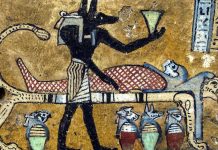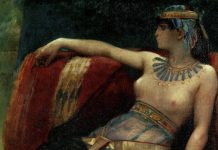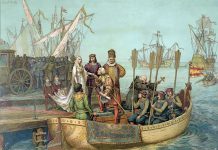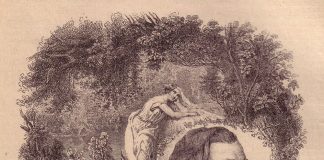Why did the French fail in the Patriotic War of 1812? Yeah, you remembered about the “cudgel of the people’s war” and the strategic genius of Kutuzov. But Boris Akunin has his own point of view on this.
In the novel-game “Quest” Akunin presented us as the main character Samson Fondorin, the grandfather of the famous detective Erast Fondorin, a favorite character of many Akunin novels.
Samson, the son of the richest Siberian breeder and a scientist with signs of genius, goes to war with the French, intending to end the enemy with one clever blow to deprive the army of its brain and soul (read: Napoleon). Having received an audience with Kutuzov and secured a letter from His Serene Highness Prince, Fandorin penetrates the French camp and, thanks to the talent of the healer, becomes his own man.
He easily manages to get into the emperor’s kitchen and dilute the broth with herbal decoction, which was prepared for Napoleon for breakfast before the Battle of Borodino. The wonderful decoction had great power: the person who drank it looked healthy outwardly with complete internal paralysis (thoughts barely moved, the desire to act disappeared).
The army, accustomed to obey a talented commander, without reasoning, turned out to be beheaded. Stunned by the potion, the emperor could not control the battle, and the marshals trained by him did not dare to make independent decisions.
As a result, the battle did not bring victory to the French and was the beginning of their inglorious end. And it’s all about an old recipe (a decoction of chernobyl, henbane and sulema, mixed with an infusion of red earthworms), which in Russia pacified the possessed and clamorous. However, the learned Fandorin enriched the potion with some of his own additives. But these are already particulars.
As the old English saying goes, truth is the daughter of time. In other words, our opinion about a phenomenon or a person may well turn out to be a historically formed misconception. And bloodthirsty tyrants may well appear as innocent lambs, and those whom we considered heroes turn out to be ordinary people.
We all remember Ilya Repin’s painting: a crazy old man embracing his son’s body with a smashed head, and a heavy royal staff lying on the carpet nearby… However, was it really like that?
The official version is as follows: Grozny found his pregnant daughter-in-law in the men’s half of the palace and began to scold, not stingy in expressions and slaps. The tsarevich stood up for his wife, and then an iron-bound staff was used. However, there are circumstances that raise doubts about such a fleeting turn of events.
Firstly, the traumatized tsarevich, preparing to retire to another world, donated to one of the monasteries an astronomical sum at that time – a thousand rubles. Secondly, the dying Ivan was brought to Alexandrov Sloboda, which had to be reached for more than a day, and there he wrote a will. Would he have had time to do all this if he had been mortally wounded in the temple, as in Repin’s painting? That is, the version that the tsarevich died suddenly is doubtful.
In 1963, the archaeologist Gerasimov opened the graves of Ivan the Terrible and his son. Tsarevich Ivan’s skull was crushed by a strong blow… According to Edward Radzinsky, the tsarevich died long and painfully, for several days.
Another version of the tsarevich’s death: the terrible father killed Ivan because he was an ardent supporter of Catholicism. However, it is known that the tsarevich headed the oprichnina, which was originally created as a stronghold of the Orthodox faith. This means that Ivan could not have anything to do with Catholicism, on the contrary, his death was in the hands of those who sought to bend Russia under the rule of the Roman throne.
Interestingly, it was the Catholic monk Antonio Possevino, an agent of the Pope at the court of Grozny, who left the testimony about this version. Who, if not a Jesuit, was capable of such a task – to deceive a gullible tsar suffering from persecution mania, convincing him that the tsarevich was making an attempt on his life?
The reputation of this monarch was ruined by William Shakespeare himself – and it is not surprising that the myth of the bloodthirstiness of Richard III took root so much, because it was composed truly ingeniously.
In the tragedy “Richard III” Shakespeare shows the king extremely unsightly. Firstly, he is a hunchback freak, and even one of his legs is longer than the other, but in the theatrical tradition of those times, physical deformity certainly signaled the moral inferiority of the character.
Secondly, Richard kills his nephews, the children of King Edward, his brother, as well as the deposed king – and all in order to get the English throne. And the monarch behaves extremely ugly – he constantly weaves intrigues.
Shakespeare’s opinion was confirmed by the historical chronicles of the pen of Thomas More, an English medieval scientist, so the point of view of Richard III as a sinister tyrant existed in science until the middle of the last century.
However, in 1951, a novel by the author of detectives Josephine Tay was published, which, having scrupulously studied all available sources, proved that Richard III was innocent of the crimes of which he was accused!
He did not kill his nephews – on the contrary, their death was extremely disadvantageous to him.
But another pretender to the English throne, Henry Tudor, really needed the children to die. The order to get rid of the minor princes was given to Henry’s confidant, the nobleman Tyrrhen, who was then quickly disposed of.
The found remains of the princes prove that the teenagers were 15 years old, that is, they died already during the reign of Henry, not Richard. To top it all off, even the rumors that Richard was a rare freak are lies. Lifetime portraits show us a completely normal person. However, he limped slightly due to a rare disease, but he was not a hunchback.
Bram Stoker in the 1897 edition of the novel of the same name made Dracula a legendary vampire who drinks the blood of young girls. But in reality it was a real historical person, the Prince of Wallachia (one of the provinces of medieval Romania) Vlad the Impaler.
The Impaler is a nickname that translates from Greek roughly as “the impaler”, it was assigned to the prince by his subjects for the fact that he preferred a stake out of all available executions.
Meanwhile, if you look at the historical facts, Vlad Tepes does not appear to be an unsympathetic character at all. On the contrary, having led his small country in an extremely difficult time for it, he managed to mobilize all his forces and repulse the outnumbered Turkish troops.
However, his own vassals betrayed the prince, and the king, accusing him of large embezzlement, puts Vlad in chains for twelve years. In addition to financial fraud, Impaler is credited with inhuman atrocities against peasants – he allegedly tortured to death and impaled a total of 30 thousand people!
But it is unlikely that there were so many people in Europe at that time. And in general, it’s enough just to look at the list of the prince’s deeds: he founded monasteries, insisted that even Christian prisoners of war could receive burial according to the Orthodox canon, and subscribed land to peasants… Historical chronicles emphasize that he was a strong and just ruler.


































